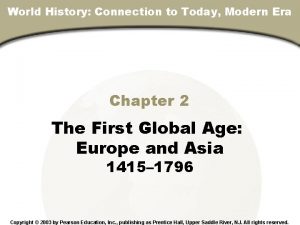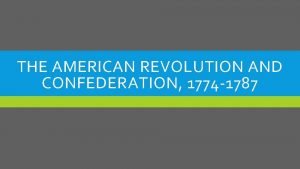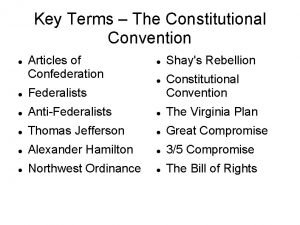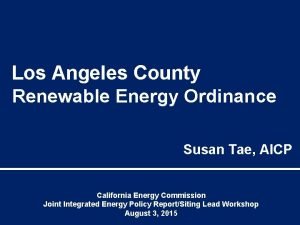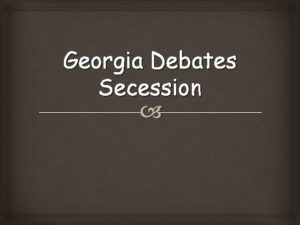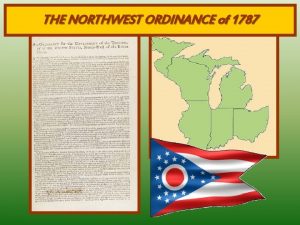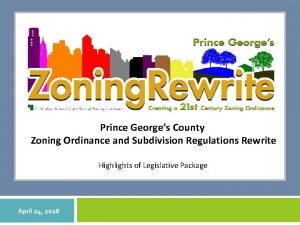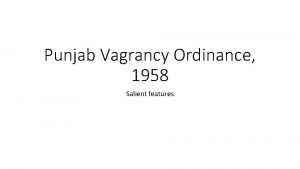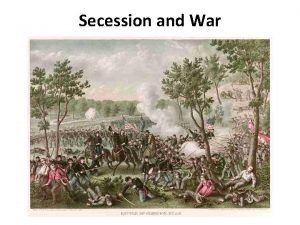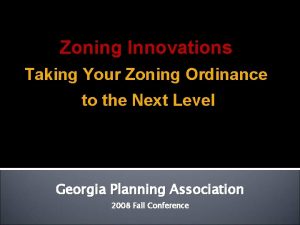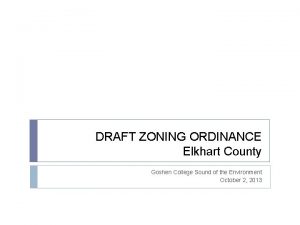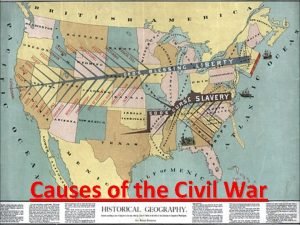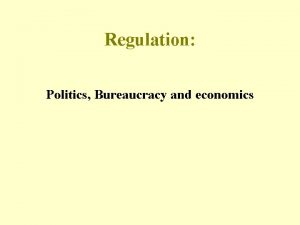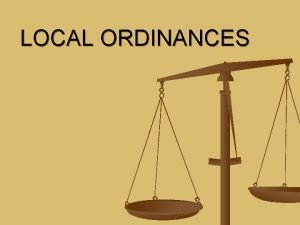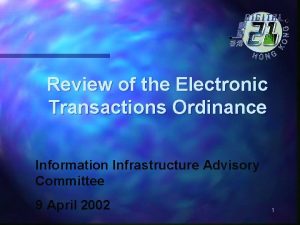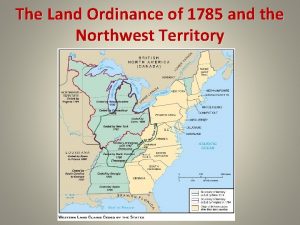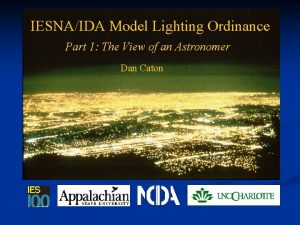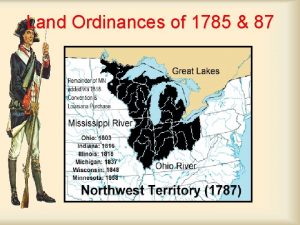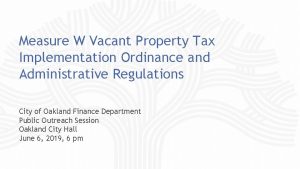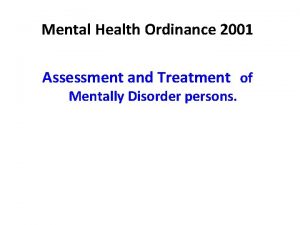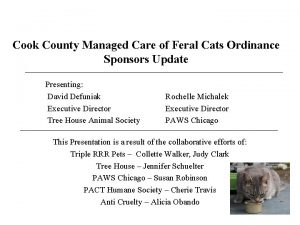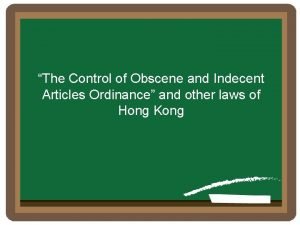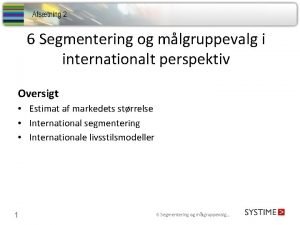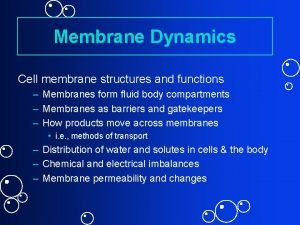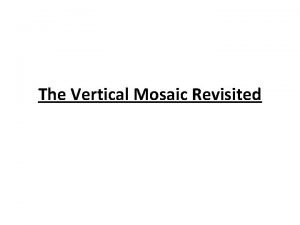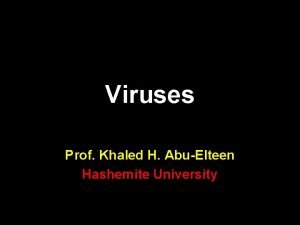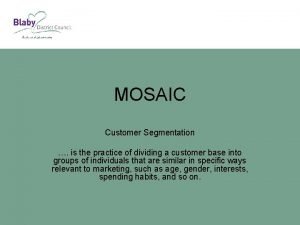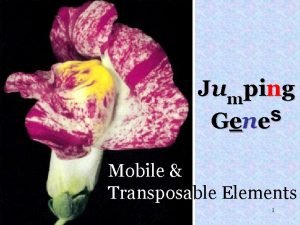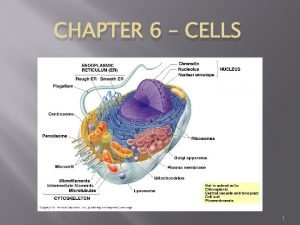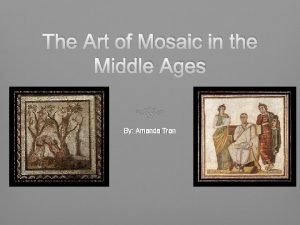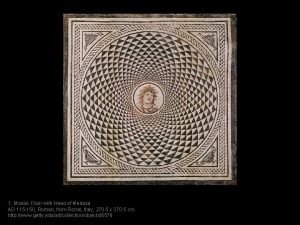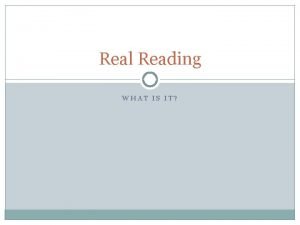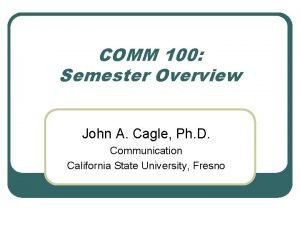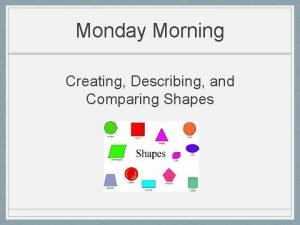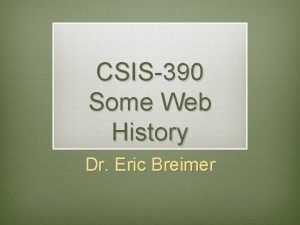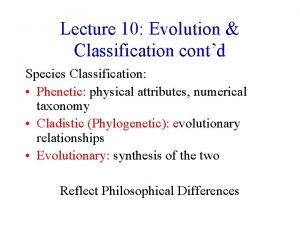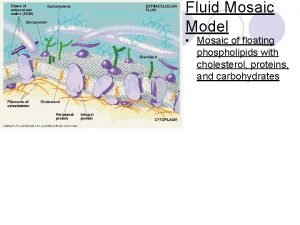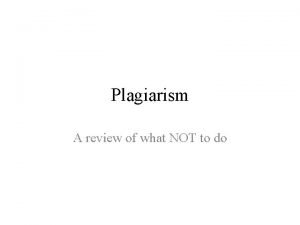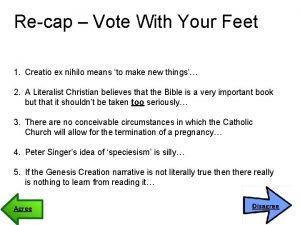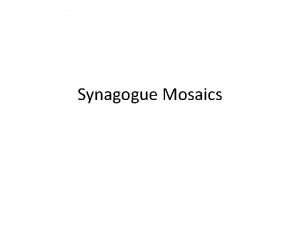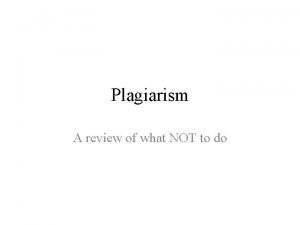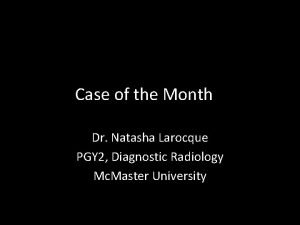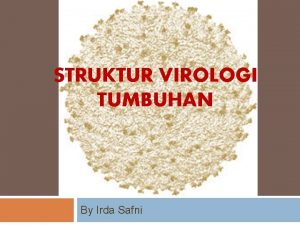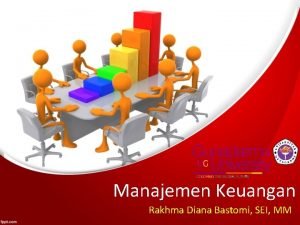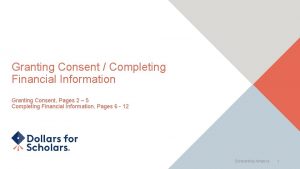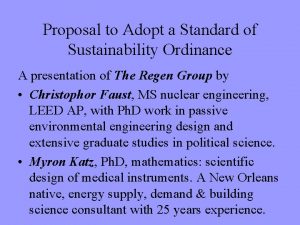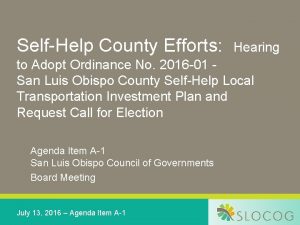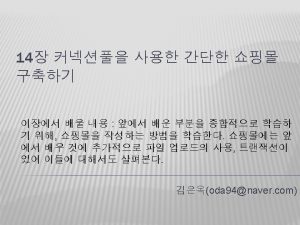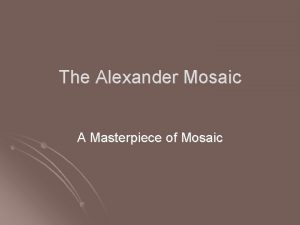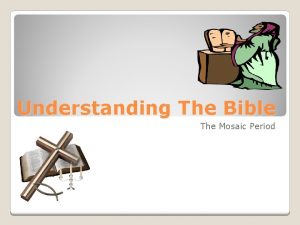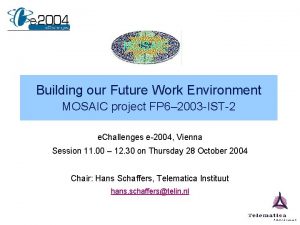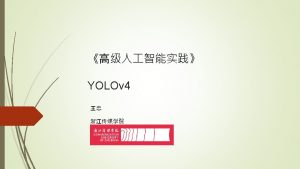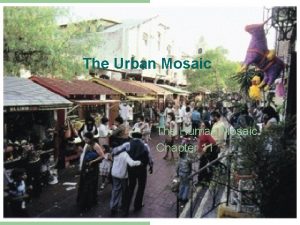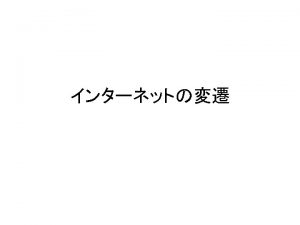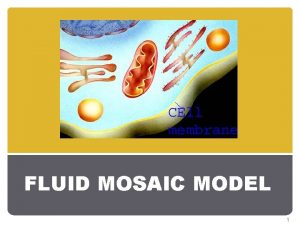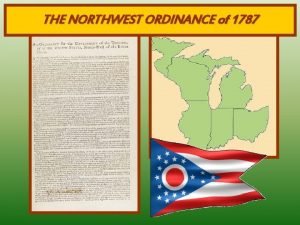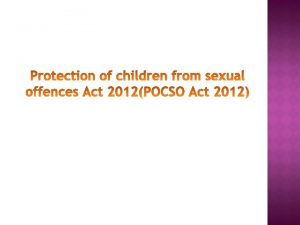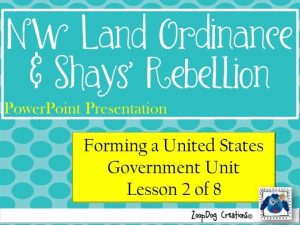AGENDA REQUEST NO Adopt an Ordinance granting Mosaic



























































- Slides: 59

AGENDA REQUEST NO. Adopt an Ordinance granting Mosaic Fertilizer, LLC an Official Zoning District Atlas amendment (RZ 2016 -05) to change from Agriculture 10 (A-10) to Phosphate Mining. Industrial (PM-I) the zoning district of 14, 053. 50+ acres of land generally located north of SW Adams Road, south of the De. Soto/Hardee County line, west of NE County Road 661, and east of the De. Soto/Manatee/ Sarasota County line. 1

WHAT ARE ZONING DISTRICT REGULATIONS? Zoning district regulations establish a map delineating the boundaries of zones which, along with the zoning text, identifies the types of land uses allowed on real property, such as residential, commercial, agricultural, mining and industrial uses. The zoning district regulations also dictate the manner in which the land is developed by restricting the density, building heights, setbacks and other attributes related to development. Zoning district regulations seeks to either limit or encourage growth within the community depending on the aim of local government. Any person seeking a zoning district map amendment (also called a rezoning) must address the specified factors or consideration before approval can be given. A rezoning is a preliminary development order because it does not grant the right to develop the property. 2

THIS EVENING’S AGENDA This evening the Board will be considering a rezoning, which is a preliminary development order which provides no rights to mine, or develop the subject property in any way. Some of the comments the Board may hear this evening will address the impacts caused by issuance of the Operating Permit. While these impacts are important and substantial, tonight’s public hearing is not the proper forum for consideration of those issues. 3

OTHER MOSAIC PHOSPHATE MINING APPLICATIONS Mosaic Fertilizer, LLC has already filed the Phosphate Mining Master Plan and Operating Permit Applications and staff is evaluating those applications. When staff has completed its review, those applications will be brought before the Board at a duly noticed public hearing to determine whether or not those applications to allow phosphate mining should be approved, provided the rezoning ordinance is adopted. 4

PROPOSED 14, 053. 4 -ACRE REZONING 5

MOSAIC REZONING APPLICATION For purposes of discussing the 14, 000+ acre rezoning application, the property has been divided into four sub-areas: 1) Sub-area 1 is a single area containing 7, 210. 6 acres; 2) Sub-area 2 consists of 8 noncontiguous areas totaling 313. 7 -acres; 3) Sub-area 3 contains 3 noncontiguous areas totaling 3, 134. 4 -acres; and 4) Sub-area 4 consists of a single 3, 394. 5 -acre area. 6

SUB-AREA 1 REZONING OF 7, 210. 6 -ACRES 7

SUB-AREA 2 REZONING OF 313. 7 -ACRES 8

SUB-AREA 3 REZONING OF 3, 134. 45 -ACRES 9

SUB-AREA 4 REZONING OF 3, 394. 5 -ACRES 10

BACKGROUND – ZONING DISTRICT REGULATIONS On September 29 th, 1981, the Board adopted Ordinance No. 81 -10, which ordinance repealed Ordinance No. 1973 -3 and established new zoning district regulations and zoning district map. The new zoning district regulations included the “Phosphate Mining and Earth Moving District (M-I)” and the new Zoning District Map rezoned 8, 985 acres of land to M-I district. Since that time, there have not been any site specific rezoning applications to the M-I zoning district. 11

BACKGROUND – ZONING DISTRICT REGULATIONS On May 25 th, 1993, the Board adopted Ordinance No. 1993 -03, which among other things, changed the name of the zoning district to Phosphate Mining-Industrial (PM-I). Since the time these 9, 000+ acres were rezoned to allow phosphate mining in 1981, no adverse impacts associated with that rezoning are apparent. 12

BACKGROUND – COMPREHENSIVE PLAN The 2010 De. Soto County Comprehensive Plan, adopted April 23 rd, 1991, contained few provisions governing mining and phosphate mining. Future Land Use Element (FLUE) Policy L. 1. 1 provided that the extraction of mineral resources may be permitted in all future land use classifications subject to all applicable local regulations. FLUE Policy L. 1. 2 required a reclamation plan as part of the extractive use permit. 13

BACKGROUND – COMPREHENSIVE PLAN On September 28 th, 2010, the De. Soto County Board of County Commissioners (Board) adopted Ordinance No. 2010 -26, which amended the FLUE by adding an objective and implementing policies pertaining to creation of a Generalized Phosphate Mining Overlay (GPM-O) designation and added a 25, 000+ acre GPM-O to the Future Land Use Map (FLUM). The Board’s establishment of the GPM-O designation ensured that phosphate mining activities could not occur countywide but were limited in application to the area defined by the GPM-O designation. 14

FUTURE LAND USE ELEMENT POLICY 1. 3. 8 Phosphate mining/extraction and related land uses are allowed in the Rural/Agriculture land use category only when the area is included in the Generalized Phosphate Mining Overlay Designation and in accordance with the Generalized Phosphate Mining Overlay Designation objective and policies, as well as other policies within the Future Land Use Element and Conservation Element which apply to phosphate mining activity. 15

FUTURE LAND USE ELEMENT OBJECTIVE 1. 12 B The Interim 2040 Generalized Phosphate Mining Overlay Designation Map (FLUEMS-5) consists of private lands that are likely to contain phosphate minerals located within the Rural/Agriculture Future Land Use District and the Phosphate Mineral Type as depicted on the Generalized Surface Minerals Map. Establishment of the Generalized Phosphate Mining Overlay Designation will ensure the orderly development of phosphate mining activity, including the extraction of mineral resources and reclamation of mined land in a manner compatible with the overall development of the County and the protection of environmental resources as further prescribed in the policies listed below and Phosphate Mining Regulations set forth in the land Development Regulations. 16

BACKGROUND – COMPREHENSIVE PLAN On January 27 th, 2015, the De. Soto County Board of County Commissioners adopted Ordinance No. 2015 -01, which amended the Comprehensive Plan’s Definitions Element (DE), the FLUE, and the Conservation Element (CE). The DE amendments revised the definition of reclamation and added definitions for restoration, ecological value, mitigation, and phosphate mining corridor. 17

BACKGROUND – COMPREHENSIVE PLAN The FLUE amendments modified Policy 1. 12. 2 on Conservation Overlay designation uses, Policy 1. 12. 6 on wetlands, Policy 1. 12. 10 on environmentally sensitive lands and historically significant resources, and Policy 1. 12. b. 3 on Generalized Phosphate Mining Overlay designation development standards. The CE amendments modified Policy 1. 5. 6 on mitigation activities, Policy 1. 5. 9 and Policy 1. 6. 4 on prohibited mining areas, Policy 1. 7. 10 on ecological value, Policy 1. 7. 11 on mitigation and reclamation, Policy 1. 9. 7 on regulating phosphate mining. 18

BACKGROUND – COMPREHENSIVE PLAN Neither the 2010 nor the 2015 Comprehensive Plan amendments contained any policy: 1) Restricting the size of land within the GPM-O designation which may be rezoned at any one time to PM-I district; or 2) Requiring that land already zoned PM-I district must first be mined and reclaimed before any new rezoning application to PM-I can be approved. 19

BACKGROUND - LAND DEVELOPMENT REGULATIONS On October 23 rd, 2012, the Board adopted Ordinance 2012 -06, which established comprehensive requirements pertaining to Phosphate Master Mining Plans, Operating Permits, and Enforcement. 20

BACKGROUND SUMMATION In summation, the filing of this rezoning application from the A-5 to the PM-I district should not be a surprise or an unanticipated development to the community. It is part of the sequence that began in 2010 and was refined in 2012 and then again in 2015. 21

MOSAIC APPLICATIONS FILED On December 14 th, 2016, MFL filed with the De. Soto County Development Department three development order applications: 1) An Official Zoning District Atlas amendment (also called a rezoning) application to change the zoning district of 14, 000+ acres from Agriculture 10 (A-10) to Phosphate Mining-Industrial (PM-I); 2) A Phosphate Mining Master Plan (PMMP) application, which provides a description of pre-mining, mining and postmining and reclamation activities over the life of a mine; and 22

MOSAIC APPLICATIONS FILED 3) An Operating Permit (OP) application, which identifies the specific phosphate mining activities proposed over a specified period of time. This Power Point Presentation only addresses the rezoning application. As noted earlier, at some future date the Phosphate Mining Master Plan and the Operating Permit applications will be brought to the Board at a duly noticed public hearing for consideration. 23

REZONING APPLICATION REVIEW LDR Section 20 -1498(a) provides that the report and recommendations of the Planning Commission to the Board of County Commissioners shall show that the Planning Commission has studied and considered the proposed change in relation to 15 listed factors. At the June 5 th and 6 th, 2018, Planning Commission public hearing, the Commission considered the proposed rezoning application in relation to 15 listed factors at recommended the Board approved the Ordinance 3 – 2. When applying the 15 factors to the rezoning of 14, 000+ acres, it may be useful to consider how the existing 9, 000 -acres zoned PM-I district have impacted the community. 24

FACTOR 1 Whether the proposed change would be consistent with the Goals, Objectives and Policies (GOPs) of the Comprehensive Plan. 1) The areas proposed to be rezoned are consistent with the GPM-O designation because the areas are located entirely within the GPM-O designation. 2) The rezoning is consistent with 8 of the 20 GOPs and the remaining 12 GOPS are not applicable to the rezoning application. 25

FLUE GOAL 1 ONFUTURE GROWTH GOAL 1: FUTURE GROWTH. Through 2040, future growth in De. Soto County will be managed using sustainability and smart growth principles to accommodate new growth without compromising the ability of future generations to meet their needs. The Future Land Use Element shall be used as a tool to direct the most intensive growth into the urban center and surrounding areas, optimizing services and infrastructure, protecting the rural character of the County, and protecting the environment. 26

FLUE GOAL 1 CONSISTENCY ANALYSIS The application proposes to direct the future growth of phosphate mining to that area specifically designated on the Interim 2040 Future Land Use Map’s General Phosphate Mining Overlay (GPM-O) designation by rezoning the land to PM-I district. It does not direct phosphate mining to urbanized areas, areas with urban infrastructure and services, or compromise future generations reuse of the land. The application review process encourages the smart growth principal of making development decisions predictable, fair and cost effective through the use of the enhanced quasi-judicial procedures. Sustainability of phosphate mining activities is managed through mandatory best mining practices and reclamation requirements. Environmental protection is addressed through the federal and state permitting requirements and De. Soto County’s Phosphate Mining Master Plan and Operating Permit requirements. 27

FACTOR 2 The existing land use pattern can be described as predominantly rural, which is characterized primarily by agricultural lands with woodlands and wetlands and scattered buildings. This rural classification is supported by the Desoto County Property Appraiser land use classification, which shows the area designated Generalized Phosphate Mining Overlay contains substantial lands devoted to pastureland, orchards, and croplands. 28

FACTOR 3 The creation of an isolated district unrelated to adjacent and nearby districts. All but one property to be rezoned abuts property already zoned PM-I district. The remaining property is partially located within a Section that includes two other sub-areas to be rezoned to PM-I district. Thus, that property will not create an isolated district because it is nearby to other property to be rezoned to PM-I district. All properties are located within the GPM-O designation. 29

EXISTING ZONING CONDITIONS 30

PROPOSED ZONING CONDITIONS 31

FACTOR 4 The impact on the availability of adequate public facilities consistent with the level of service standards. • The level of service methodology is population based; and • The proposed rezoning will not increase population because the underlying residential density established by the Rural/Agriculture designation is not being changed. Therefore, the rezoning will not impact the availability of public facilities including transportation, potable water, sanitary sewer, recreation and open space (there is no residential component), solid waste, and drainage. 32

FACTOR 5 Whether the existing district boundaries are illogically drawn in relation to existing conditions on the property. The existing condition on the property is the presence of the phosphate resources and the A-10 zoning district does not allow phosphate mining resources to be extracted. FLUE Objective 1. 12 b acknowledges the presence of phosphate mining resources as a reason for creating the GPM-O designation. The PM-I zoning district is the only zoning district that allows phosphate resources to be extracted and the rezoning is to PM-I is consistent with the GPM-O designation. State law requires that Comprehensive Plan’s be implemented and the rezoning would implement Comprehensive Plan phosphate mining provisions. Thus, the existing zoning district boundaries are illogically drawn because the property has phosphate mining resources, the purpose of the GPM-O designation is to allow the extraction of phosphate, and the A-10 prohibits the property’s phosphate resources from being extracted. 33

FACTOR 6 Whether changed or changing conditions make the passage of the proposed amendment necessary. The changed or changing conditions are: 1) The depletion of phosphate resources from other phosphate mining locations causing mining activities to shift southward and into De. Soto County; 2) The establishment of the GPM-O designation; 3) The Florida Department of Environmental Protection (FDEP) has issued an Environmental Resource Permit (ERP) to allow activities that affect wetlands, alter surface water flows, or contribute to water pollution; 34

FACTOR 6 4) The FDEP has issued a Conceptual Reclamation Plan establishing a framework of reclamation planning; 5) The Florida Division of Historical Resources has issued a Cultural Resource Assessment Survey Clearance letter; and 6) The Southwest Florida Water Management District has issued an Integrated Water Use Permit for consumptive use of ground water. 35

FACTOR 7 Whether the proposed zoning will adversely influence living conditions in the area. The proposed rezoning will not adversely influence living conditions in the area for the following reasons: 1) The proposed rezoning does not prohibit the existing uses and conditions from continuing to operate in the future. The existing agricultural and rural uses have not adversely influenced living conditions in the area. 36

FACTOR 7 2) There is no evidence that adverse living conditions were created when nearly 9, 000 acres were rezoned to PM-I in 1981. 3) There is no evidence that adverse living conditions were created when De. Soto County adopted the 25, 000 -acres GPM-O designation in 2010. 37

FACTOR 7 4) Issues such as noise, vibrations, light trespass and glare, air pollution and fugitive dust are not caused by a proposed rezoning. These important and substantial issues are appropriately addressed at the time the Board considers the Phosphate Mining Master Plan and Operating Permit applications. 5) Approval of the proposed rezoning does not authorize commencement of mining activities. 38

FACTOR 8 Whether the proposed change will create or excessively increase traffic congestion or otherwise affect public safety. 1) The Agricultural/Rural FLUM designation is not being changed. That designation allows one dwelling unit per 10 acres, which could generate 13, 445 daily trips and 1, 391 peak hour p. m. trips, not including the trips associated with the existing 9, 000 acres. 39

FACTOR 8 2) With regard to non-residential uses, the A-10 zoning district already allows some land uses, such as agritourism related development and wholesale agricultural produce transfer stations, which if approved by issuance of a development permit, could potentially generate more daily and peak hour trip ends than the non-residential uses allowed within the PM-I zoning district. 3) The proposed rezoning is a preliminary development order that does not authorize the commencement of phosphate mining activities. This is evidenced by the rezoning to PM-I district of nearly 9, 000 acres in the 1980’s. 40

FACTOR 8 4) Assuming the Applicant subsequently receives all required approvals, the transportation analysis included with the PMMP and OP applications show that the traffic generated by the proposed mining activities is less than five percent of the roadway capacities, and that such roadways will continue to operate within adopted levels of service. 5) Public safety concerns are addressed through the PMMP and OP applications, as the LDR requires a comprehensive safety plan be provided in order to ensure public safety. 41

FACTOR 9 Whether the proposed change will create a drainage problem. 1) The proposed rezoning does not authorize any change to the existing drainage patterns and allows the continued agricultural and rural uses on the land to continue. This is evidenced by the rezoning to PM-I district of nearly 9, 000 acres in the 1980’s. A rezoning is a preliminary development order that does not allow mining and related activities to occur until all federal, state, and local development permits are acquired. If the Applicant cannot secure such permits, mining activities would be prohibited. 42

FACTOR 9 2) LDR Section 20 -571(6) provides that any development for which stormwater management permits are required by Federal, State, or SWFWMD regulations are exempt from the stormwater management requirements of this division to the extent that such permits include review and consideration of impacts on adjacent property and/or County drainage and provided that the development activities has the necessary permit prior to commencement. 3) A Florida Department of Environmental Protection (FDEP) permit has been issued and is evidence of compliance with drainage requirements. 4) Drainage issues are important and can be substantial but are more appropriately addressed during review of the PMMP and OP applications and not during the rezoning application process. 43

FACTOR 10 Whether the proposed change will seriously reduce light and air to adjacent areas. 1) The proposed rezoning does not prohibit the existing agricultural and rural uses and existing light and air conditions from continuing to operate in the future. This is evidenced by the rezoning to PM-I district of nearly 9, 000 acres in the 1980’s. 2) The reduction of light and air generally is due to an improper relationship between building height and setback and is common in high intensity urban areas, where high land costs make tall building profitable. De. Soto County generally lacks the high land values needed to make vertical construction profitable. 44

FACTOR 10 3) The proposed rezoning does not change the existing setbacks. LDR Section 20 -974(c)(2) establishes minimum setbacks ranging from 200 to 1, 000 linear feet from the property line for excavation activities, settling ponds and beneficiation facilities, and stockpiles. Conformance with these requirements will be addressed when the Board hears the OP application. 4) The proposed rezoning does not change air quality standards. LDR Sections 20 -973(b)(18) and 20 -974(c)(6) establishes an environmental monitoring program for air quality. Issues pertaining to air pollution and fugitive dust emissions will be addressed when the Board hears the PMMP and OP applications. 5) The proposed rezoning constitutes a preliminary development order and such approval does not authorize any mining and related activities to operate on the property. Development may commence only when all federal, state, and County approvals have been received. 45

FACTOR 11 Whether the proposed change will adversely affect property values in the adjacent area (i. e. , stigmatization). 1) The proposed rezoning would not prohibit the existing agricultural and rural uses from continuing to operate in the future. 2) The proposed rezoning does not place any constraints or limitations on the adjacent property owners’ use of their lands. Such owners can proposes new uses consistent with the property’s zoning district. 3) There is no evidence that property values were adversely affected when nearly 9, 000 acres were rezoned to PM-I in 1981. 46

FACTOR 11 4) There is no evidence that property values were adversely affected when De. Soto County adopted the 25, 000 -acres GPM-O designation in 2010. 5) The proposed rezoning does not authorize commencement of mining and related activities. the 6) A literature search did not discover any studies concluding that phosphate mining had an adverse impact on property values in the abutting area. 47

FACTOR 11 7) Mining is a temporary land use occurring on only a portion of the proposed property at any one time. There is no evidence showing phosphate mining causes a temporary loss in value. However, assuming that a temporary loss of value were to occur, that temporary loss could be recaptured once the land is reclaimed and returned to a similar state of use prior to mining. 48

FACTOR 12 Whether the proposed change will be a deterrent to the improvement or development of adjacent property. 1) The proposed rezoning does not change the physical appearance of the property or adjacent property. Existing uses can continue to operate. This is evidenced by the rezoning to PM-I district of nearly 9, 000 acres in the 1980’s. 2) The proposed rezoning does not change the existing stormwater flows on the property or adjacent property. 3) The proposed rezoning does not cause the generation of traffic or such other conditions so as to impede adjacent property owners from having access onto their property. 49

FACTOR 12 4) The proposed rezoning does not change the existing potable water and sanitary sewer conditions on the property. 5) The proposed rezoning does not authorize the commencement of construction and the potential for the generation of noise, vibrations, glare, odors, and dust. 50

FACTOR 13 Whether the proposed change will constitute a grant of special privilege to an individual owner as contrasted with the public welfare. 1) Mosaic is not being granted a special privilege - Any person with property that is located within the GPM-O designation could request a similar rezoning to PM-I from the Board. 2) Second, the GPM-O designation protects the public welfare by limiting phosphate mining activities only to that area within its boundaries. 51

FACTOR 13 3) The use of the quasi-judicial public hearing procedures in a rezoning application serves the public welfare and the quasijudicial public hearing procedures are being applied to the Mosaic rezoning application. 52

FACTOR 14 Whethere are substantial reasons why the property cannot be used in accord with existing zoning. 1) The property to be rezoned has valuable phosphate resources and the A-10 zoning district does not allow the mining of those phosphate resources. 2) The purpose of the GPM-O designation is to allow property with phosphate resources to be rezoned so as to allow phosphate mining. 53

FACTOR 14 3) The inability to extract those resources represents a substantial diminution in the economic value of the property to the owner. The Owner should not arbitrarily be deprived of the economic value associated with the extraction of mineral resources. 54

FACTOR 15 Whether the change suggested is out of scale with the surrounding area. 1) The phrase “out-of-scale” is not defined and can be interpreted various ways, such as by size of the property or intensity of development. 2) When the 25, 000 -acre GPM-O designation was adopted, it was envisioned that the entire area would be rezoned to PM-I. The 14, 000+ acre rezoning represents 56 percent of the GPM-O. 55

FACTOR 15 3) In 1981, the Board adopted a new zoning district map that rezoned nearly 9, 000 -acres of land to PM-I district. The proposed 14, 000 -acre rezoning is 1. 56 times larger than the initial PM-I rezoning. 4) The rezoning does not change the scale of the maximum allowable residential density. That scale is determined by the underlying Rural/Agricultural designation. 56

FINDINGS AND RECOMMENDATION In summary, the Development Director finds the application has addressed each of the 15 factors provided for in LDR Section 20 -1498(a). Based on the totality of the circumstances, the Development Director recommends the Ordinance granting the Official Zoning District Atlas amendment application from A-10 to PH-I be adopted. 57

PLANNING COMMISSION RECOMMENDATION As noted earlier, at the end of the duly noticed Planning Commission public hearing held on June 5 th and June 6 th, 2018, the Planning Commission by a 3 -2 vote recommended the Board approve the Ordinance rezoning the property. 58

END OF PRESENTATION Any questions? 59
 What impact did nearness to the sea have on greece
What impact did nearness to the sea have on greece Characteristics of remedial teaching
Characteristics of remedial teaching What policy did the qing adopt regarding foreign trade?
What policy did the qing adopt regarding foreign trade? Why did chevron adopt bpi?
Why did chevron adopt bpi? Adopt uskids
Adopt uskids Cost of granting credit
Cost of granting credit Agenda sistemica y agenda institucional
Agenda sistemica y agenda institucional Northwest ordinance of 1787
Northwest ordinance of 1787 Upper allen township zoning map
Upper allen township zoning map Northwest ordinance of 1787
Northwest ordinance of 1787 Ordinance
Ordinance Debate over secession in georgia
Debate over secession in georgia What is the northwest ordinance
What is the northwest ordinance Prince george's county new zoning ordinance
Prince george's county new zoning ordinance The punjab vagrancy ordinance 1958
The punjab vagrancy ordinance 1958 Northwest ordinance of 1787
Northwest ordinance of 1787 What is the significance of the northwest ordinance? *
What is the significance of the northwest ordinance? * Ordinance
Ordinance Elkhart county zoning ordinance
Elkhart county zoning ordinance Northwest ordinance lead to civil war
Northwest ordinance lead to civil war Regulator economics definition
Regulator economics definition Local ordinance
Local ordinance Northwest ordinance of 1787
Northwest ordinance of 1787 Electronic transactions ordinance
Electronic transactions ordinance Land ordinance of 1785
Land ordinance of 1785 Model lighting ordinance
Model lighting ordinance Northwest ordinance of 1787
Northwest ordinance of 1787 Northwest ordinance of 1787
Northwest ordinance of 1787 Hec
Hec Nccpl
Nccpl Northwest ordinance of 1787
Northwest ordinance of 1787 Energy benchmarking ordinance
Energy benchmarking ordinance Mental health ordinance
Mental health ordinance Spay cook county
Spay cook county Obscene and indecent articles ordinance
Obscene and indecent articles ordinance Mosaic modellen
Mosaic modellen Fluid mosaic model
Fluid mosaic model The vertical mosaic
The vertical mosaic App classroom mosaic
App classroom mosaic Booking
Booking Gawain 7 alamin mo
Gawain 7 alamin mo Mosaic postcode analysis
Mosaic postcode analysis Cauliflower mosaic virus
Cauliflower mosaic virus Davson danielli model vs fluid mosaic model
Davson danielli model vs fluid mosaic model Medieval period mosaic
Medieval period mosaic Mosaic floor with head of medusa
Mosaic floor with head of medusa Mosaic of thought
Mosaic of thought Becker's mosaic model of communication
Becker's mosaic model of communication Tv mosaic
Tv mosaic Van hiele mosaic puzzle
Van hiele mosaic puzzle Eric briemer
Eric briemer Mosaic evolution
Mosaic evolution Hypostonic
Hypostonic Mosaic plagiarism violation
Mosaic plagiarism violation Tree of life apse mosaic
Tree of life apse mosaic The mosaic floor of the beth alpha synagogue
The mosaic floor of the beth alpha synagogue Mosaic plagiarism definition
Mosaic plagiarism definition Natasha larocque
Natasha larocque Protein kapsid yang susunannya berbeda
Protein kapsid yang susunannya berbeda Mosaic tile
Mosaic tile


